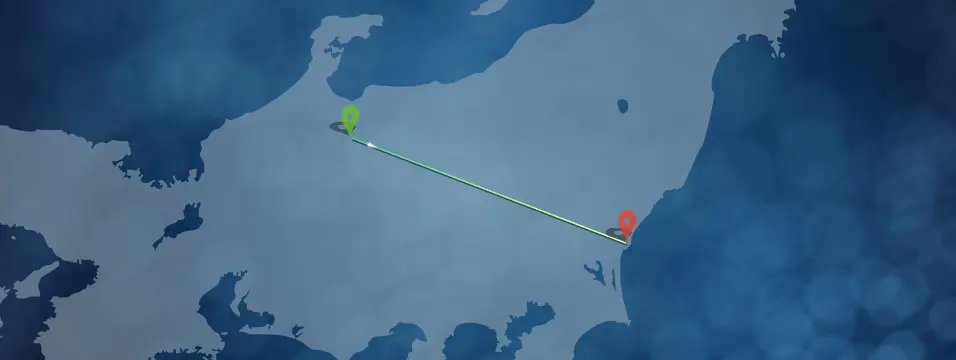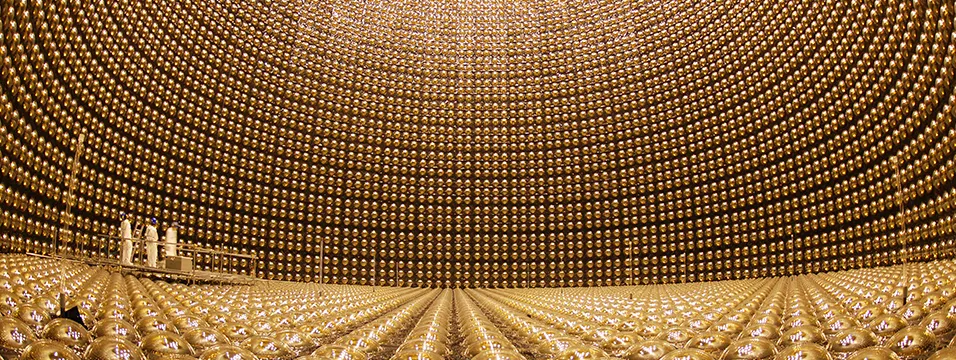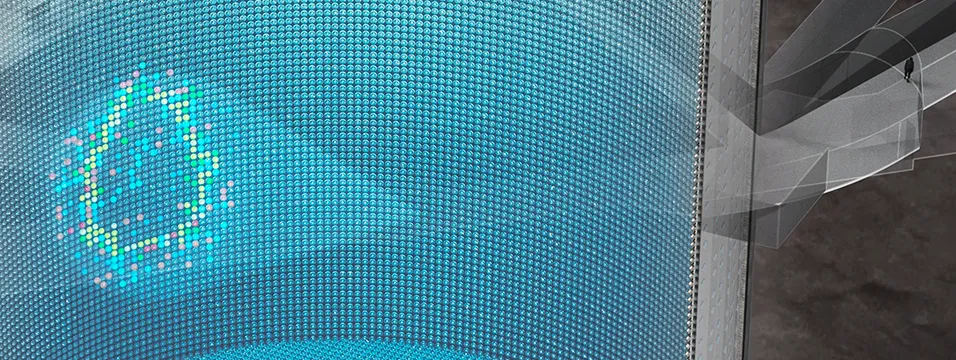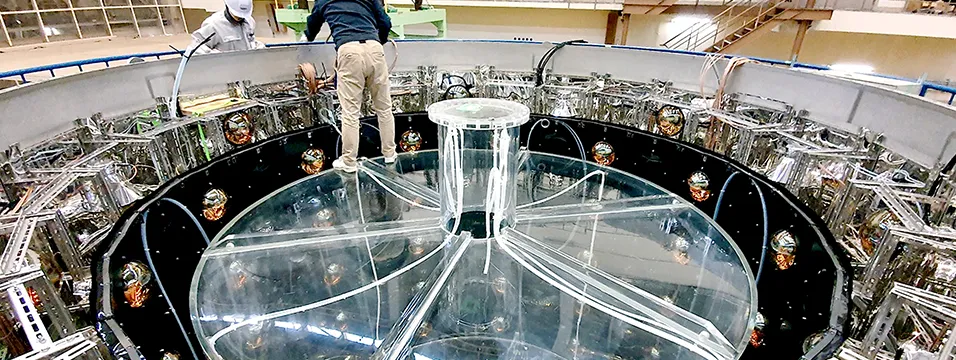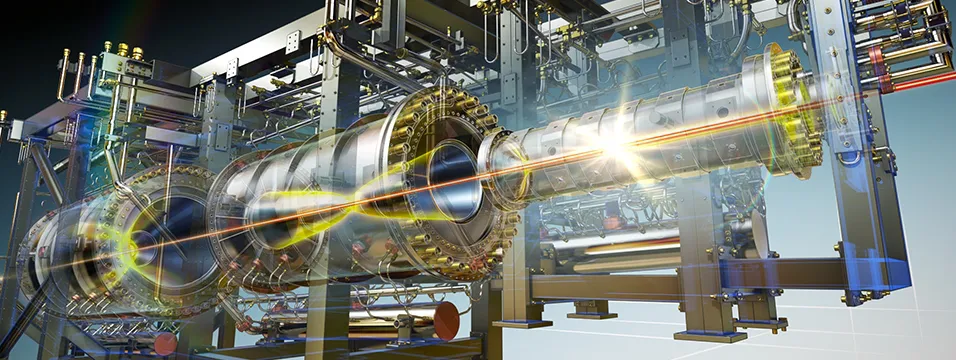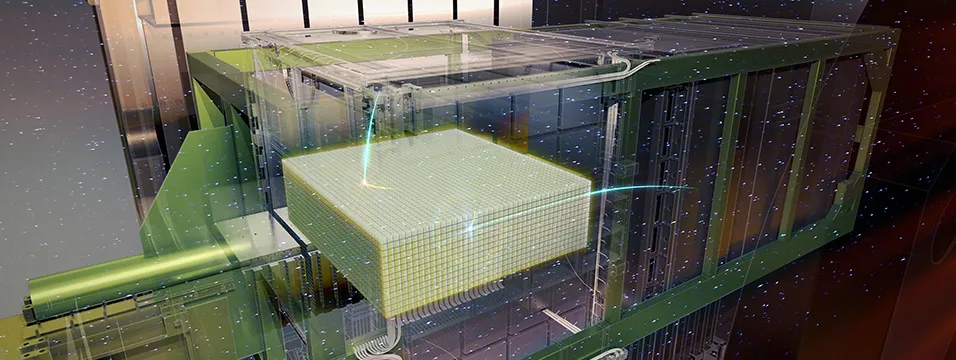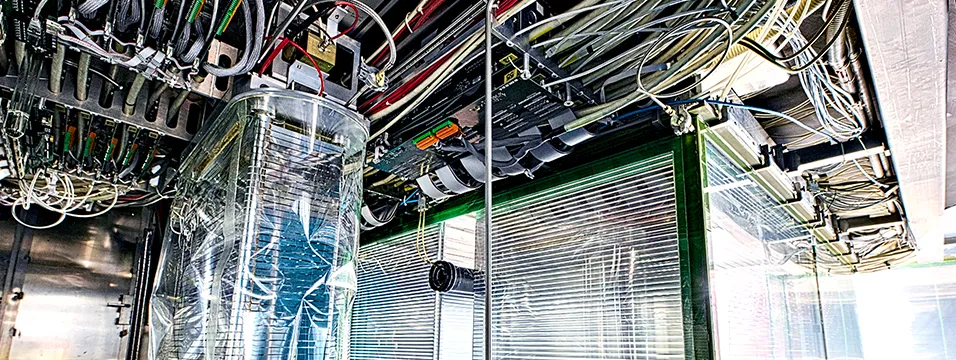Intermediate Water Cherenkov Detector
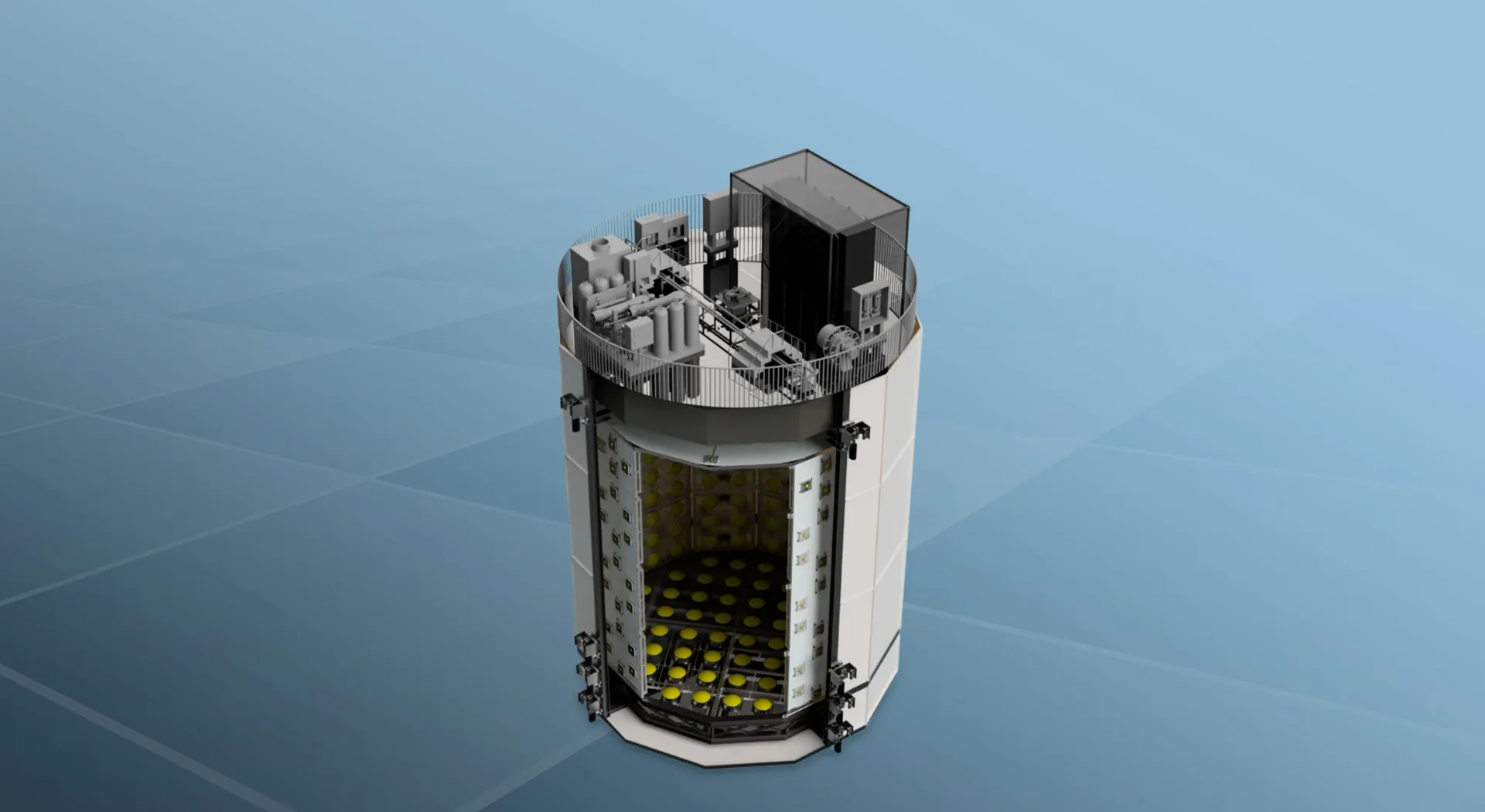
The IWCD detector will be constructed at a new experimental site in Tokai village. To observe the beam neutrinos passing through underground toward the Hyper-Kamiokande detector, the detector will be placed inside a pit filled with water, which has an inner diameter of 10 m and a depth of 50 m. Start of operation is planned in 2028.
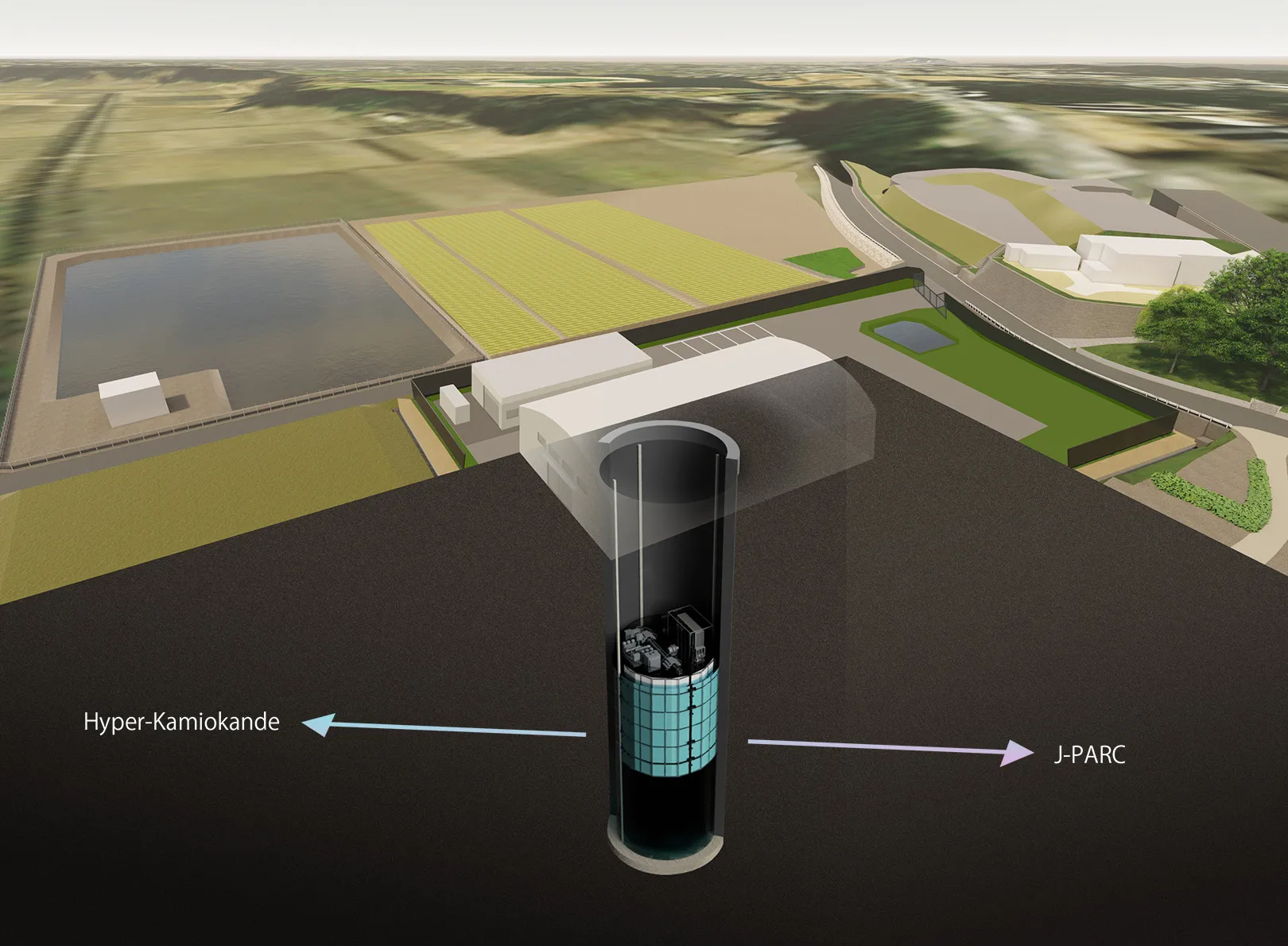
Intermediate Water Cherenkov Detector
It is planned to newly build an intermediate water Cherenkov detector (IWCD) at a construction site located about 1 km away from J-PARC. The IWCD detector, which has the same operation principles as the Hyper-Kamiokande detector, will be used to measure J-PARC beam neutrinos in the direction of the Hyper-Kamiokande detector.
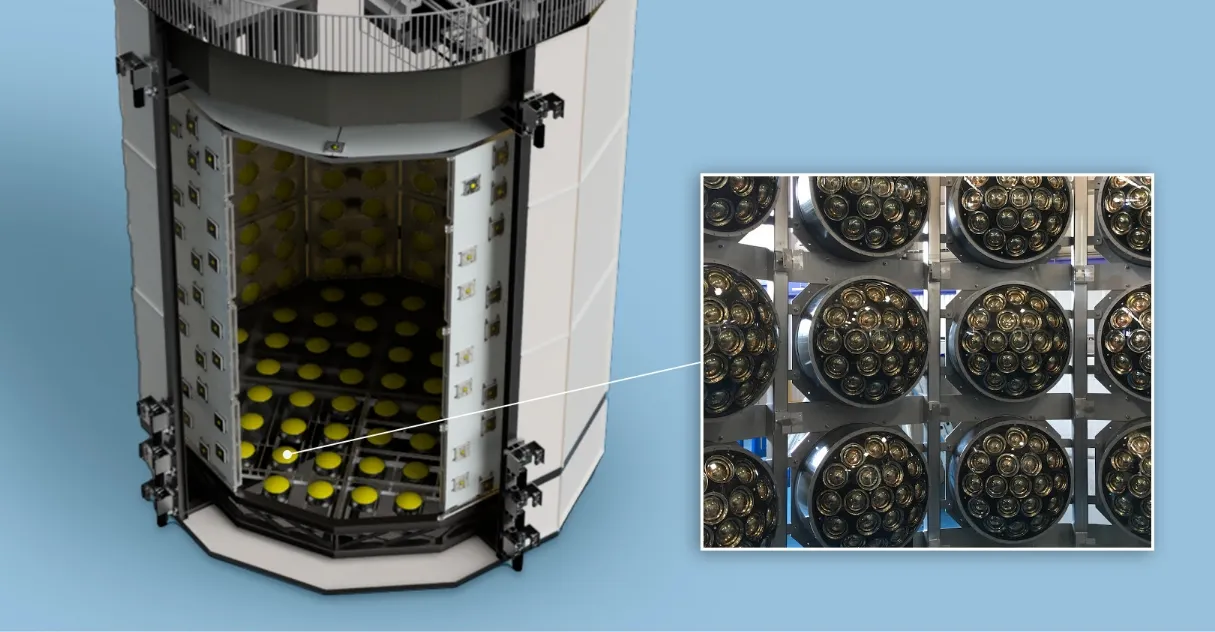
The IWCD detector is a novel water Cherenkov detector with a diameter of 9 m and a height of 12 m. When neutrinos pass the pure water volume of the detector, those neutrinos rarely interact with the water, producing faint lights called Cherenkov lights. The lights are detected using about 400 multi-photomultiplier tubes (multi-PMTs).
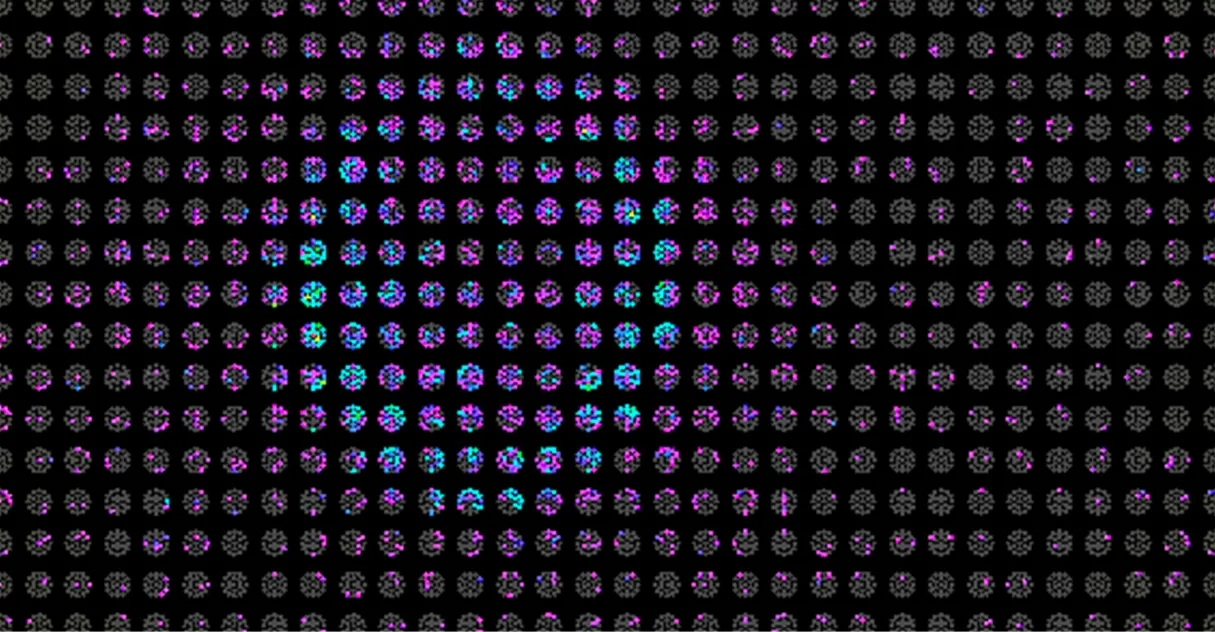
The multi-PMT is a new photosensor module that consists of 19 3-inch photomultiplier tubes, providing higher resolution of Cherenkov light pattern than the 20-inch PMTs to be used for the Hyper-Kamiokande detector.
Similar to a boat, the IWCD detector can be floated in the pit by a floatation attached to its top part, which enables the detector to vertically move. The energies of the neutrinos produced at J-PARC are different at different pit depths. By observing the beam neutrinos at various depths, we will study how neutrinos change, depending on their energies.

